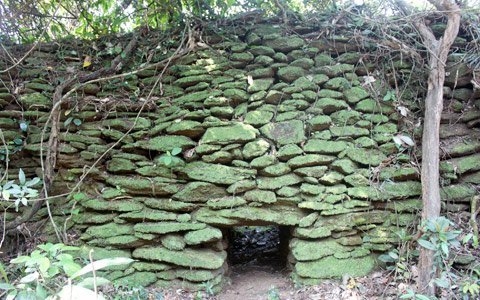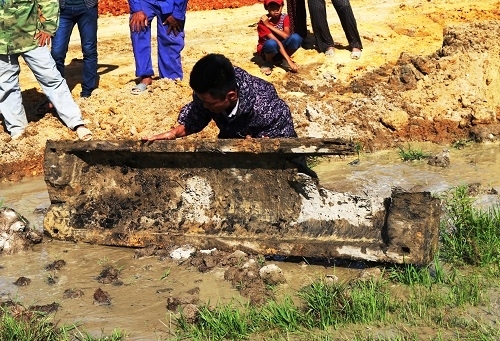 Life & Style
Life & Style

A boat-shaped tomb made from a tree trunk dating back to the 13th century has just been discovered at a construction site in a mountainous area in the central province of Hà Tĩnh.
 |
| Solid defence: The Kỳ Anh Rock Fortification system dates back to 4th century in Kỳ Anh District, Hà Tĩnh Province. It has just been recognised as a National Historical Relic Site. — Photo dantri.com.vn |
HÀ TĨNH — A boat-shaped tomb made from a tree trunk dating back to the 13th century has just been discovered at a construction site in a mountainous area in the central province of Hà Tĩnh.
The tomb was found at a depth of 3m in Ngàn Trươi Hydro-electricity Plant, in Đức Đồng Commune, Đức Thọ District.
According to experts from the provincial museum, the tomb measures 1.9m in length and 0.4-0.5m in width. There is a black compound covering the inside of the tomb. Scientists also found some objects inside, including a ceramic bowl and an ancient coin.
Scientists believe that the tomb was of a people under the Trần dynasty (1226-1400) and the boat-shape style of the Đông Sơn civilisation (7th century BC-2nd century AD).
Earlier, experts found many boat-shaped tombs made from tree trunks in other localities in plain areas of Hà Tĩnh Province like Can Lộc, Cẩm Xuyên and Lộc Hà districts.
The tombs have been declared to belong to the people of Trần and Lê dynasties (13th-14th century).
“This is the first time such a boat-shaped tomb has been found in a mountainous area in the province,” confirmed Lê Bá Hạnh, an official from the museum, “This shows that ancient Vietnamese people resided in both plain and mountains in early times.”
 |
| Tomb raider: A boat shaped tomb made from a tree trunk was found at a depth of 3m in Ngàn Trươi Hydro-electricity Plant, in Đức Đồng Commune, Đức Thọ District. — Photo hatinh24h.com |
In other news, a rock fortification system dating back to the 4th century in Kỳ Anh District, Hà Tĩnh Province has just been recognised as a National Historical Relic Site.
Kỳ Anh Rock Fortification was unearthed by archaeologists in 1993 on top of a local pass. The defence system had been formed by natural dark coloured flagstones. It runs from the east to the west and measures 1km in length and 5-7m in width with average height of 4m. There is a guard point with a firing position and accommodation for soldiers every 50m along the fortification.
Scientists from Việt Nam Archaeology Institute, the French School of Extreme Orient and the local culture sector conducted serious research at the site in 2012.
The fortification has been considered to be a part of Lâm Ấp Ancient Fortification, which used to run a length of more than 30km. The Lâm Ấp Fortification was built by Phạm Văn (345-375) to protect the border.
The scientists admitted this is a uniquely designed ancient fortification with high quality architectural techniques. It has important cultural and historical value.
The Ministry of Culture, Sports and Tourism listed the site among the national art and architecture sites to facilitate preservation tasks for further research and tourism in 2014. — VNS




